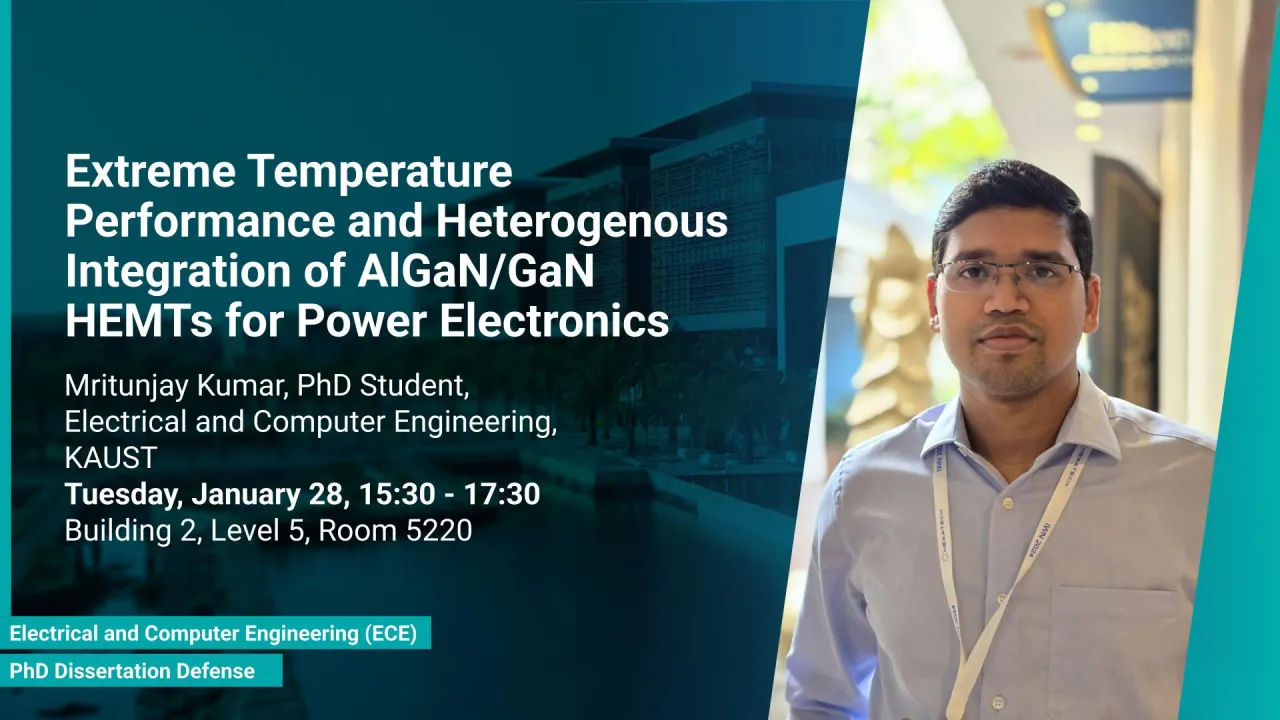
Extreme Temperature Performance and Heterogenous Integration of AlGaN/GaN HEMTs for Power Electronics
B2, L5, R5220
Power integrated circuits (PICs) for extreme temperature applications, such as space exploration and automotive systems, require devices that can operate reliably under harsh conditions.
Overview
Gallium nitride (GaN) high-electron-mobility transistors (HEMTs) are ideal for these ICs due to their robust electronic properties, including high breakdown voltage, high electron mobility, and thermal stability. However, operating GaN HEMTs at high temperatures presents challenges, particularly high gate leakage current and threshold voltage (VTH) instability, which can undermine the electrical stability and reliability of the PICs.
To address these challenges, we developed a two-layer gate stack of aluminum oxide and gallium oxide for GaN HEMTs, significantly reducing gate leakage current at 450°C by four orders of magnitude. This design also maintained a stable VTH from 25 to 450°C, outperforming aluminum oxide-only designs due to fewer defects in the gallium oxide layer, enhancing high-temperature performance and reliability. Additionally, we reduced the thermally induced VTH instability of GaN HEMTs using a combination of nickel oxide and silicon nitride in the gate area. When characterized at temperatures ranging from 25 to 400°C, this approach showed a much smaller VTH shift of 0.4 V compared to a silicon nitride-only design showing 1.4 V of negative shift in VTH, due to positive charge carriers in the nickel oxide layer that neutralizes trapped charges, ensuring more reliable operation at high temperature.
To further enhance the performance of PICs in extreme environments, we developed an "interposer" style integration of an In2O3 FET-based gate driver with GaN HEMTs on a Si substrate, achieving stable operation up to 125°C. Additionally, we introduced the heterogeneous integration of Ga2O3 devices with GaN HEMTs for extreme temperature resilience. In these heterogeneous PICs, ensuring fail-safe operation is crucial, as failures can propagate across the system, leading to catastrophic consequences. We addressed this by developing a ~7.4 V high VTH enhancement-mode GaN HEMT, which demonstrated stable operation under stress with a high current ratio of ~109. This work significantly advances the reliability and performance of WBG material-based PICs for extreme-temperature applications.
Presenters
Brief Biography
Mritunjay Kumar is a Ph.D. candidate in Electrical Engineering at King Abdullah University of Science and Technology (KAUST), Saudi Arabia, under the supervision of Prof. Xiaohang Li. Before joining KAUST, he earned his Master of Technology from the Indian Institute of Technology (IIT) Dhanbad. His research focuses on developing advanced wide-bandgap semiconductor devices for extreme-temperature power electronics applications, addressing challenges such as threshold voltage instability and high gate leakage currents in GaN HEMTs through innovative materials and gate design techniques.
Mritunjay has made significant contributions to the field of power electronics for extreme temperature, as evidenced by publications in reputed journals such as Applied Physics Letters (APL) and Japanese Journal of Applied Physics (JJAP). His achievements include the development of a high-threshold voltage (7.4 V) enhancement-mode GaN HEMT and the implementation of bi-layer gate stacks for stable operation at temperatures up to 450°C. His work also explores heterogeneous integration, such as combining GaN HEMTs with indium oxide-based driver circuits and gallium oxide transistors, demonstrating stable operation in harsh environments.